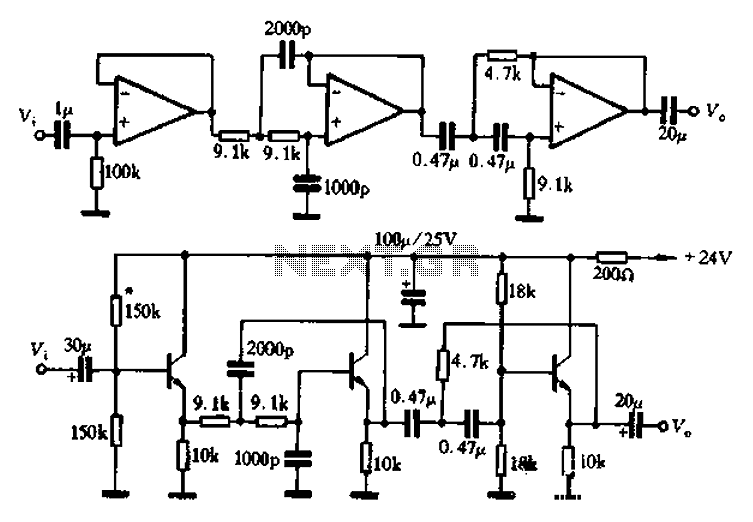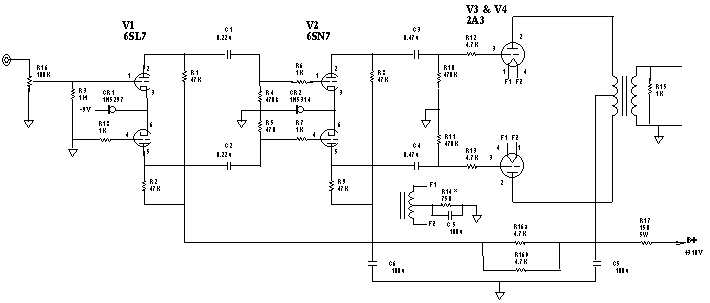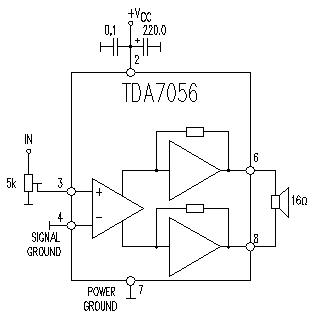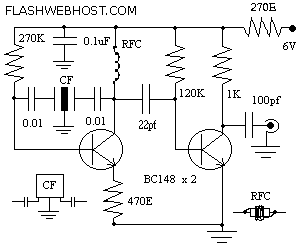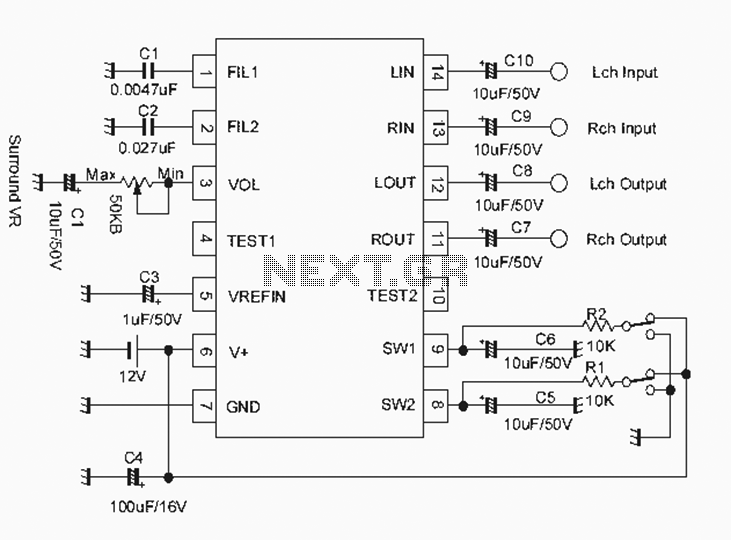
Brick-wall lowpass audio filter needs no tuning
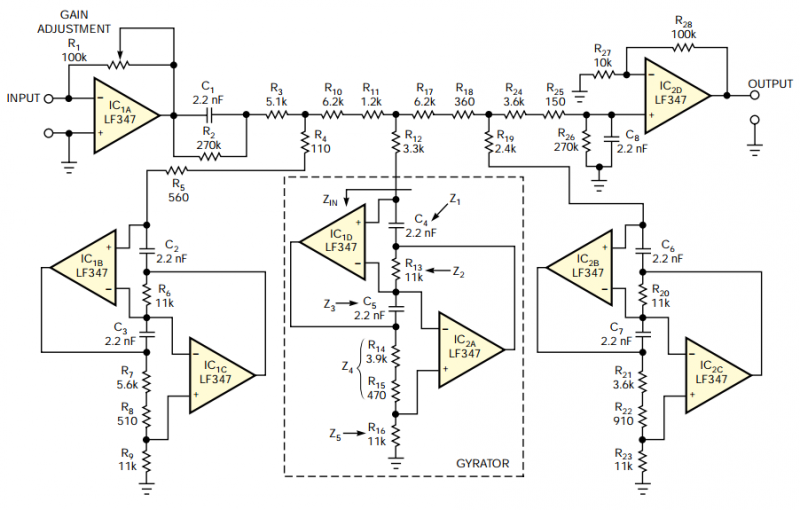
The filter should provide adjustable gain to maximize SNR at the audio processor's first stage. The filter's frequency response should also include a notch at 19 kHz to achieve maximum attenuation at the FM-subcarrier pilot-tone frequency and thus minimize phasing problems. To reduce manufacturing costs, the filter should require no in-process adjustments. Conventional analog active-filter designs cannot meet these goals at reasonable cost and complexity without time-consuming adjustments. This Design Idea outlines an active-filter-synthesis approach that reduces a filter's sensitivity to passive-component tolerances and enables construction of inexpensive, high-order and highly selective filters. More: When a system's specifications call for a lowpass filter with a steep frequency-cutoff characteristic, an engineer can opt for a "brick-wall"-filter design that features a sharp transition band. For example, in an FM stereophonic-broadcast system, the lowpass filter in the baseband audio's left and right channels should have a –3-dB cutoff frequency of at least 15 kHz, a passband ripple of less than 0.3 dB, a stopband start frequency of at least 19 kHz, a stopband attenuation greater than 50 dB, and identical phase response for both channels.
The proposed filter design aims to achieve a high-performance audio processing solution by incorporating an active filter synthesis approach. This method is particularly advantageous as it minimizes sensitivity to the tolerances of passive components, which is crucial for maintaining consistent performance in mass-produced units. The filter will provide adjustable gain, allowing for optimization of the signal-to-noise ratio (SNR) at the initial stage of the audio processor.
The frequency response of the filter is specifically tailored to include a notch at 19 kHz, which is essential for attenuating the FM subcarrier pilot-tone frequency. This notch filter will help to mitigate phasing issues that can arise in audio signals, particularly in systems that rely on precise timing and phase relationships between channels.
In terms of performance specifications, the lowpass filter is expected to exhibit a steep cutoff characteristic, making it suitable for applications such as FM stereophonic broadcasting. The design will ensure a –3 dB cutoff frequency of at least 15 kHz, with a passband ripple maintained below 0.3 dB. Additionally, the filter will feature a stopband that begins at a frequency of at least 19 kHz, achieving a stopband attenuation greater than 50 dB to effectively suppress unwanted high-frequency signals.
To further enhance the design, it will be constructed to eliminate the need for in-process adjustments, thereby reducing manufacturing costs and complexity. This approach not only facilitates easier production but also ensures that the filter maintains its performance characteristics across different manufacturing runs, making it a reliable choice for high-order and highly selective filter applications in audio processing systems.The filter should provide adjustable gain to maximize SNR at the audio processor's first stage. The filter's frequency response should also include a notch at 19 kHz to achieve maximum attenuation at the FM-subcarrier pilot-tone frequency and thus minimize phasing problems. To reduce manufacturing costs, the filter should require no in-process adjustments. Conventional analog active-filter designs cannot meet these goals at reasonable cost and complexity without time-consuming adjustments.
This Design Idea outlines an active-filter-synthesis approach that reduces a filter's sensitivity to passive-component tolerances and enables construction of inexpensive, high-order and highly selective filters.
🔗 External reference
The proposed filter design aims to achieve a high-performance audio processing solution by incorporating an active filter synthesis approach. This method is particularly advantageous as it minimizes sensitivity to the tolerances of passive components, which is crucial for maintaining consistent performance in mass-produced units. The filter will provide adjustable gain, allowing for optimization of the signal-to-noise ratio (SNR) at the initial stage of the audio processor.
The frequency response of the filter is specifically tailored to include a notch at 19 kHz, which is essential for attenuating the FM subcarrier pilot-tone frequency. This notch filter will help to mitigate phasing issues that can arise in audio signals, particularly in systems that rely on precise timing and phase relationships between channels.
In terms of performance specifications, the lowpass filter is expected to exhibit a steep cutoff characteristic, making it suitable for applications such as FM stereophonic broadcasting. The design will ensure a –3 dB cutoff frequency of at least 15 kHz, with a passband ripple maintained below 0.3 dB. Additionally, the filter will feature a stopband that begins at a frequency of at least 19 kHz, achieving a stopband attenuation greater than 50 dB to effectively suppress unwanted high-frequency signals.
To further enhance the design, it will be constructed to eliminate the need for in-process adjustments, thereby reducing manufacturing costs and complexity. This approach not only facilitates easier production but also ensures that the filter maintains its performance characteristics across different manufacturing runs, making it a reliable choice for high-order and highly selective filter applications in audio processing systems.The filter should provide adjustable gain to maximize SNR at the audio processor's first stage. The filter's frequency response should also include a notch at 19 kHz to achieve maximum attenuation at the FM-subcarrier pilot-tone frequency and thus minimize phasing problems. To reduce manufacturing costs, the filter should require no in-process adjustments. Conventional analog active-filter designs cannot meet these goals at reasonable cost and complexity without time-consuming adjustments.
This Design Idea outlines an active-filter-synthesis approach that reduces a filter's sensitivity to passive-component tolerances and enables construction of inexpensive, high-order and highly selective filters.
When a system's specifications call for a lowpass filter with a steep frequency-cutoff characteristic, an engineer can opt for a "brick-wall"- filter design that features a sharp transition band. For example, in an FM stereophonic-broadcast system, the lowpass filter in the baseband audio's left and right channels should have a –3-dB cutoff frequency of at least 15 kHz, a passband ripple of less than 0.3 dB, a stopband start frequency of at least 19 kHz, a stopband attenuation greater than 50 dB, and identical phase response for both channels.
🔗 External reference
